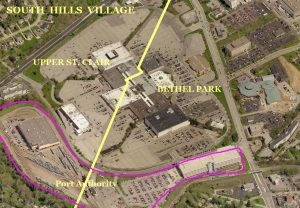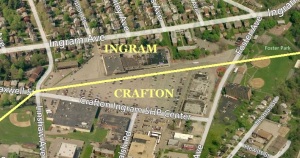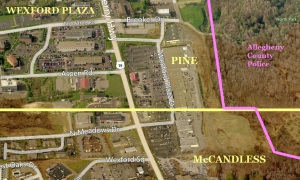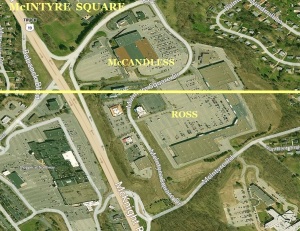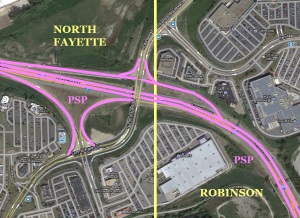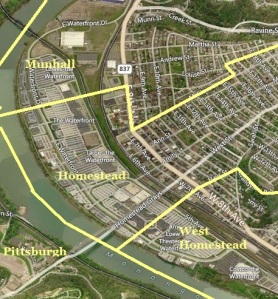Before I say anything about the upcoming primary election to determine candidates for the fall race for the Quaker Valley School Board, a couple of things in the interest of full disclosure:
1. I am presently registered to vote as an Independent. This is a carry-over from my days in Colorado, where just under 1/3 of the state's active voters are registered as "unaffiliated". I would elaborate on my reasons for this, but that would take too long and veer off the topic at hand. Maybe later.
In Pennsylvania, this unfortunately means that I am shut out of the primary election. So as a consequence of my registration, I won't be voting for any of my fellow citizens on Tuesday. I commend them for their willingness to commit to public service, and wish them all the best.
2. In 1981, I was a candidate for Quaker Valley School Board in Region I. I managed to cross-file for both the Democratic and Republican ballots in the primary.
I ran a campaign like any other - made lots of phone calls, spray-painted signs in the basement and put them up around the area, paid for print ads in the Herald and radio spots on WMBA, and went to at least one 'meet the candidate' night. I thought that I went through at least the motions of a candidacy pretty well.
I came in second out of three candidates in both races. It was for the best - I was a college dropout in his early 20's who didn't have a clue of what he wanted to do with his life. It showed in other ways as well - I didn't see a lot of the most valuable things, many of which were right in front of me.
So it is with a measure of regret that I tried to look at this year's slate of School Board candidates.
In their public statements and advertising, many of them seem to be saying very much the same thing - maintain the existing high quality of education in tandem with an emphasis on fiscal responsibility. There are, however, subtle differences behind the lofty rhetoric that may distinguish them just a little.
Four of the candidates - Mr. Bunde, Ms. Heres, Mr. Warburton, and Mr. Weicht - have aligned themselves into what could be best described as an unofficial coalition, if the full-page ad in the May 2 Herald, which they all paid for together, is any indication of intent.
That this coalition includes Ms. Heres of Region II, the lone incumbent in the race, says to me that these four represent a "status quo" ticket. It should also be noted that the three attorneys in the race make up the remainder of this group. All four have children currently attending QV schools.
These four seem to be saying that if you like the way things have been going, and want more of the same, they're the best choice to stay that course.
The remaining three candidates may have a different view (otherwise why run - right?), and perhaps to a greater degree than the others have included a theme of community involvement and responsiveness to citizens as part of the message they are trying to send.
One of these three, Ms. Wagner, has extensive experience, but has also adopted a hard-line approach toward tax increases that may (or may not) serve her well. Maybe demographics has something to do with it. More about that later.
The remaining two, Ms. Helkowski and Mr. Kuzma, appear to be the only two QV alumni in the race. Ms. Helkowski is an active parent and homemaker - Mr. Kuzma has other credible experience in government operations.
They seek to represent Region I, which includes Leetsdale, from where the most recent and vocal opposition to current board practices has originated.
This opposition is likely to carry over to whomever assumes Board duties after the November elections. The upcoming Traffic and Safety Task Force report, slated to be presented to the Board sometime this spring, is rumored to not have consensus support of the entire Task Force membership.
It would be unfortunate if this supposed effort to achieve understanding and transparency only created more mistrust and/or frustration.
No doubt that the controversy weighs on all of the candidates, even if they haven't said hardly anything about it publicly. The Concerned Taxpayers of Quaker Valley may be small in numbers right now, but there is plenty of potential for growth if those whom we choose to represent us are perceived as unresponsive or aloof.
So what makes something approaching an ideal public servant? For me, it comes down to being able to actively listen, be flexible, and keep an open mind - not qualities at which I excel all of the time, but nonetheless appreciate the value of, whether in relationships personal, professional, or political.
Speaking of (in)flexibility, and keeping in mind my continuing fascination with boundary lines, I couldn't help but notice that the three regions the Quaker Valley School District is divided into for purposes of Board representation are the same as they were back in 1981.
These boundaries are interesting in that Sewickley Borough, on its own as Region II, commands 1/3 of the board representation, but comprises only 27.5 percent of the district's population, according to 2010 US Census Data obtained from Wikipedia.
Compare this with Region III, whose 7 municipalities include Aleppo Township, the district's second most populous. Fully half of Aleppo's population is over 45 years of age, slightly higher than most QV communities. In neighboring Sewickley Heights, 58 percent are over 45. Perhaps this is a factor in the fiscal stance taken by candidate Wagner, who seeks to represent this region.
What is most interesting to me is that the 3 board members in Region III represent a population of 5,867, out a total district population of 13,934 - that's 42.1 percent.
Only Region I - Bell Acres, Leet, and Leetsdale - comprises a population approaching proportionality with its representation - 30.4 percent of the total.
I'm not saying that there has to be perfection or exacting consistency with how many representatives are allocated to each region. I do believe that the rural character of many district municipalities has been impacted by development, and that the potential for additional population growth in these areas is likely greater than in Sewickley.
Does this mean that an evaluation and possible re-allocation of representatives may be in order? Is there justification to explore electing some Board representatives on an At Large basis? These are questions that the candidates may likely face should they be successful on Tuesday, and again in November.
State Rep. Jesse White penned an excellent column last week, in which he urged all citizens to become involved in the political process by paying attention to who is standing to represent their interests, and participating in the primary election. While his column is directed mainly at protecting the rights of communities to apply zoning to energy development, it's nonetheless a timely reminder for all of us.
Rep. White could go a long way toward accomplishing this end by advocating for open primaries in Pennsylvania, but I'm not going to hold my breath waiting for that. It seems that if I want to make a difference, especially in races like this, I'll have to abandon the ranks of the "unaffiliated" and start showing up at the polls in May.
So should you. Get out and vote this Tuesday...if you can.
Have a great week ahead.
